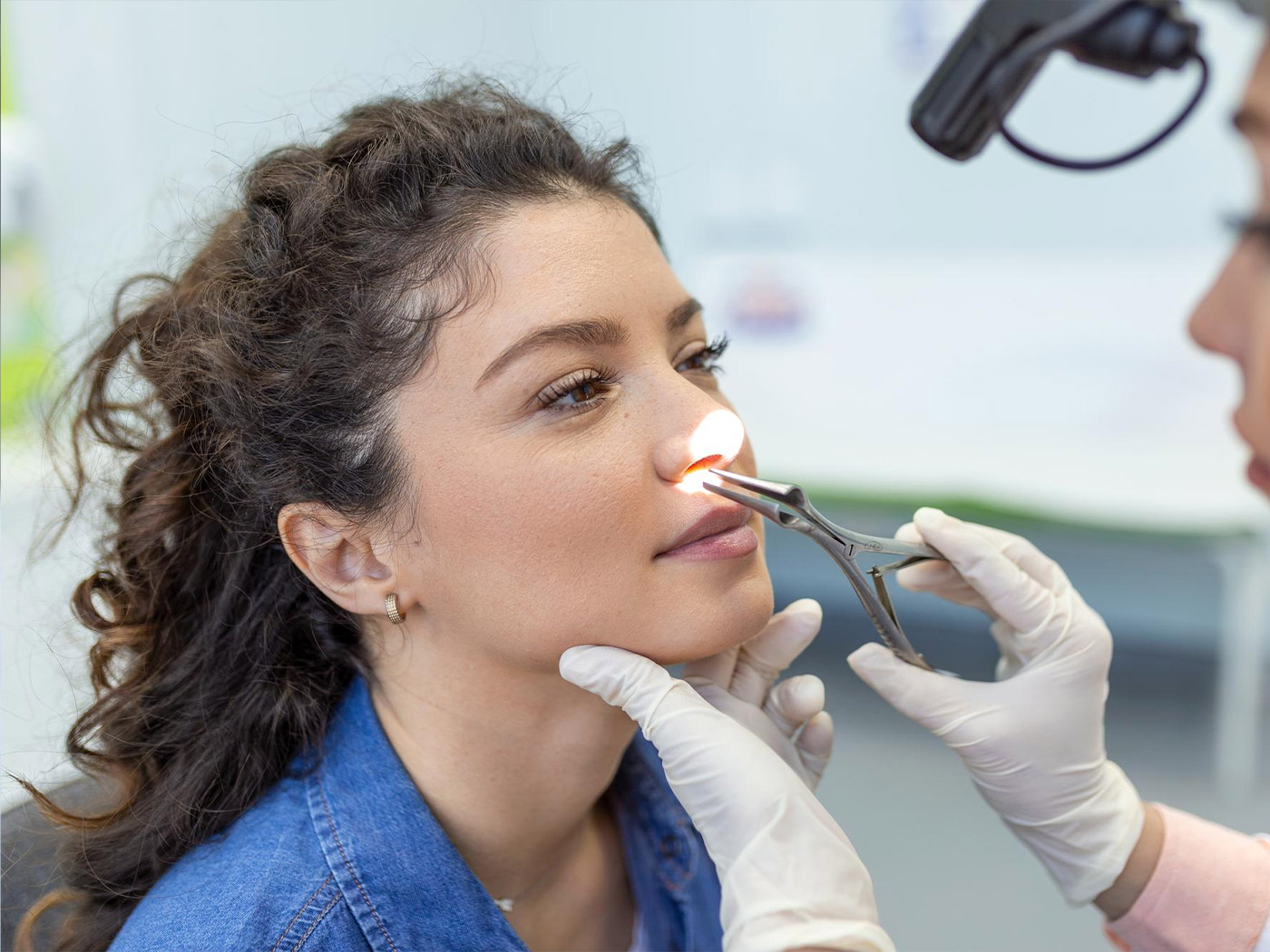

17.12.2024.
What factors can be an obstacle for nose surgery?
What factors can be an obstacle for nose surgery? Belgrade. TOP PRICE✓ Rhinoplasty✓ Nose correction✓ Septoplasty✓ Rhinosinusitis✓ Thickening of the skin on the nose✓
Nose surgery is not suitable for everyone and carries certain risks, especially for people with existing health problems.
What factors can be an obstacle for nose surgery?
Nose surgery, whether it's aesthetic rhinoplasty or functional interventions like septoplasty or correction of deformities, is not suitable for everyone. Although this procedure is considered safe and effective for improving the appearance and function of the nose, there are several factors that can influence whether surgery is the right choice for you.
When is the best time for rhinoplasty?
Age plays a significant role in determining when is the best time for nose surgery, as well as the procedure itself. The ideal time for rhinoplasty is usually after the nose has fully matured. In most cases, girls' noses finish developing between the ages of 15 and 17, while boys typically reach the "final form" of their nose between the ages of 17 and 19. For this reason, nose surgeries in young individuals are typically performed only after the nose's development stabilizes, as doing it too early could lead to undesirable results.
Middle-aged patients (20–50 years) usually have the best results. At this age, the skin is still elastic enough to ensure good recovery and the retention of aesthetic results. Additionally, the nose's structure (cartilage and bones) is stable, which allows the surgeon predictability and precision in shaping the nose. These individuals also typically do not have serious health issues that could affect the surgery.
Older patients (50+) may face challenges due to changes in skin and nose structure. As we age, the skin loses elasticity, and cartilage may become more fragile. These changes can make it harder to achieve the desired results, as surgery must be adapted. Also, older patients often have other health issues, such as high blood pressure, diabetes, or cardiovascular diseases, which may increase the risk of complications during surgery. Therefore, comprehensive health assessments are especially important for older patients before deciding on rhinoplasty.
Skin condition and its role in nose surgery
The skin is one of the most important factors in assessing suitability for nose surgery. The shape of the nose depends not only on its structure (cartilage and bones) but also on how the skin covers these structures. Skin thickness, elasticity, and existing skin issues can significantly affect the techniques the surgeon uses and the final result.
Thin skin
Individuals with thin skin typically have a better chance of achieving precise and dramatic results. Thin skin allows the surgeon to better display the structural changes made during surgery. Additionally, recovery is usually faster since the tissue doesn't need to stretch as much. However, thin skin may reveal details about the nose's structure, so fine imperfections may be visible post-surgery, which would be hidden in thicker skin.
Thick skin
Thick skin can make it harder to achieve fine details and precise shapes. Due to the increased thickness of the skin, structural changes in the nose are less visible, and results may be less dramatic. Patients with thick skin often require more complex surgical techniques, which may include more detailed cartilage modeling to achieve the desired aesthetic effect. During recovery, thicker skin may also take longer to adapt to the new shape of the nose.
Skin problems
If a patient has skin problems such as acne, rosacea, or other dermatological disorders, this can affect the surgery planning. The surgeon must carefully assess how these issues could affect the recovery process and results. In some cases, these issues may require treatment before proceeding with nose surgery.
Chronic sinus issues
If a patient has chronic sinus problems, such as rhinosinusitis, this can significantly affect the planning of rhinoplasty. Conditions like chronic sinusitis can make it difficult to breathe properly through the nose, which may provide additional reasons to perform the surgery. However, such problems also require special attention in preoperative planning.
Preoperative assessment
The first stage is a thorough medical assessment, which includes a sinus examination, diagnostic tests (such as X-rays or CT scans), and an analysis of the patient's medical history. For patients with chronic sinus issues, the surgeon may recommend additional procedures, such as septoplasty (correction of the nasal septum) or turbinate reduction (removal of tissue inside the nose), to improve sinus drainage and facilitate breathing.
Postoperative care
After surgery, patients with chronic sinus issues require careful monitoring and regular check-ups to ensure proper sinus function. In some cases, prolonged treatment or nasal irrigation may be needed to avoid infections and speed up recovery.
Risks of nose surgery for smokers
Smoking is one of the biggest risks to the success of nose surgery. Nicotine narrows blood vessels, reducing blood flow and making wound healing more difficult. Smokers typically have a longer recovery process and a higher risk of infections, which can lead to poor postoperative results, including scarring, tissue necrosis (death of tissue), and changes in the structure of the nose.
Risks include:
- Delayed wound healing: Smokers experience slower recovery, and wounds don't close properly.
- Increased risk of infection: Smoking weakens the immune system, increasing the risk of postoperative infections.
- Tissue necrosis and deformities: Limited blood flow can damage skin and tissue, leading to nasal deformities.
- Poor aesthetic results: Due to poor healing, there is a greater risk of scarring and nasal asymmetry.
For all these reasons, smokers are advised to stop smoking at least 2–4 weeks before surgery and during the entire recovery period.
If you're considering nose surgery and want to achieve natural, aesthetic results that will improve your functionality and self-confidence, it's important to dedicate time to detailed preparation and consultations with experts. Whether your goal is improving appearance or resolving functional issues, with the right approach, support, and careful planning, rhinoplasty can be a step towards a better version of yourself. Contact us for a free consultation, and together we will design the best plan for your future!
How to schedule a rhinoplasty appointment?
If you'd like to schedule an appointment for rhinoplasty, inquire about the prices for nose surgery, or have additional questions, please contact us by phone at +381 65 202 77 77 or visit the following pages: Nose Surgery, Nose Tip Surgery, and Full Nose Surgery.
Royal Plastic Surgery
Why choose us?
The best, most affordable and safest aesthetic clinic in Belgrade and Serbia.
